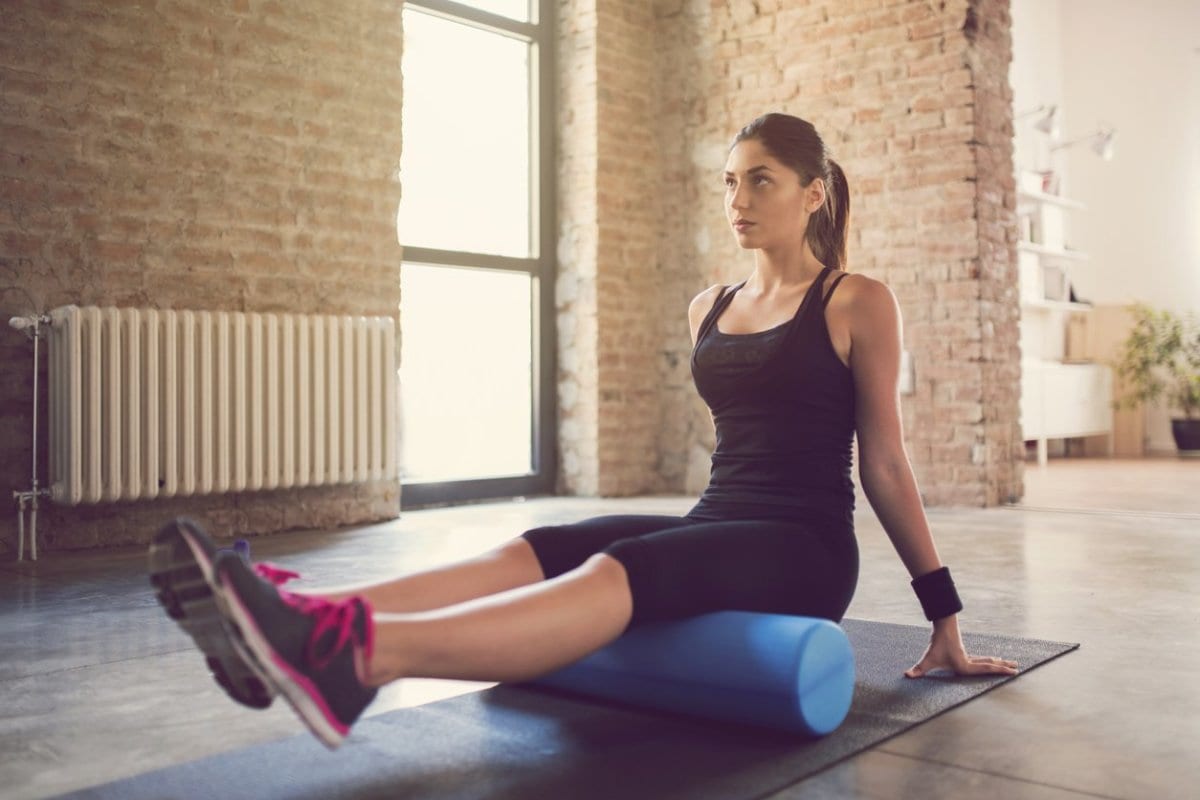Fascia is an important connective tissue made primarily of collagen that can be found throughout the body. It is found below the skin, surrounding our muscles, bones, organs and nerves. Myofascial release can be required for a variety of reasons such as microtrauma (from a hard workout), overuse syndromes and traumatic injuries. Tight fascia is associated with increased DOMS (delayed onset muscle soreness), poor biomechanics, poor body alignment and reduced muscle strength/function.
What is MFR?
Myofascial release is a type of manual therapy performed by clinicians such as physiotherapists, chiropractors and massage therapists. It involves applying low load, long duration stretch to the myofascial complex. The goal of MFR is to improve the integrity of the fascia by reducing tension, restoring elasticity, reducing pain and improving performance of the tissue.
MFR works through several mechanisms: It stimulates our parasympathetic nervous system which tells our brain to reduce muscle tone. It has been shown to improve arterial function and blood flow. It also results in improved tissue hydration.
What is SMFR?
Self-myofascial release is a technique used by individuals to target areas of fascial restriction without the assistance of a clinician. It has become increasingly popular among active populations as a form of injury prevention and for the maintenance of healthy tissues.
What type of SMFR tools are there?
Foam rollers, lacrosse balls, tiger tails, spikey balls. There are a wide variety of tools you can use ranging from gentle to more aggressive. Tools like lacrosse balls are great for the shoulders and the glutes, whereas foam rollers work great for the thoracic spine, quads and hamstrings. Tools like the tiger tail work really well for people who find it difficult to maneuver on a foam roller or to get down onto the floor. There is no right or wrong tool. Choose a tool that works best for you. This way, you will be more inclined to actually use it.
What will SMFR do for me?
Improved range of motion. Multiple studies have shown improvement in range of motion of the ankle, hip, knee and lumbar areas after SMFR. Research suggests that foam rolling can increase ROM by increasing tissue temperature and changing the fascia from a more solid-like gel to a fluid state.
Reduced DOMS. Various amounts of pain and inflammation can be associated with exercise depending on the intensity, duration and type of exercise preformed. Delayed onset muscle soreness is the tenderness/stiffness upon palpation or movement of a muscle as a response to the micro trauma induced during exercise. Studies show that foam rolling after exercise can reduce muscle tenderness. This means quicker recovery and faster return to exercise.
Improved Performance. Many researchers have studied the effects of SMFR on muscle performance. The exact mechanisms are not clear; however, the evidence suggests that SFMR plays a role in reducing neural inhibition, thus enhancing communication between the brain and the muscles.
Tips on foam rolling/SMFR:
- Don’t press too hard. Allow your tissues to relax into your SFMR tool, not the other way around. Contrary to popular belief, SMFR should not be painful. Some discomfort is okay, but is important to relax, breath to allow the parasympathetic nervous system to take control. The parasympathetic nervous system works to reduce tone in the muscle and fascia. Too much force applied on a foam roller is only going to reinforce the pain-spasm cycle and keep your sympathetic nervous system awake. This is our bodies fight-or-flight response system which is not helpful during recovery.
- Take your time. Studies show that spending 1.5-3 minutes per body site will provide the best results. Aim for approx. 20 minutes post exercise. Make sure you move slowly and methodically. If you find a particularly tight knot, spend some extra time on that area in order for it to release. If a specific spot in your muscle is too sore, work around it until your body can tolerate pressure on that point without extreme pain.
- Foam rolling can be a beneficial part of your warm-up routine. However, make sure you are also warming up your tissues with a dynamic mobility routine pre-exercise. Spend a few minutes with your foam roller (or another tool of choice), then get your body moving and your blood flowing. This will help prepare your body for exercise and also prevent injury. Spend more time with your SMFR tool post-exercise to aid in tissue recovery.
By. Robyn Carignan Physiotherapist – Pivotal Physiotherapy









1 Comment
Comments are closed.